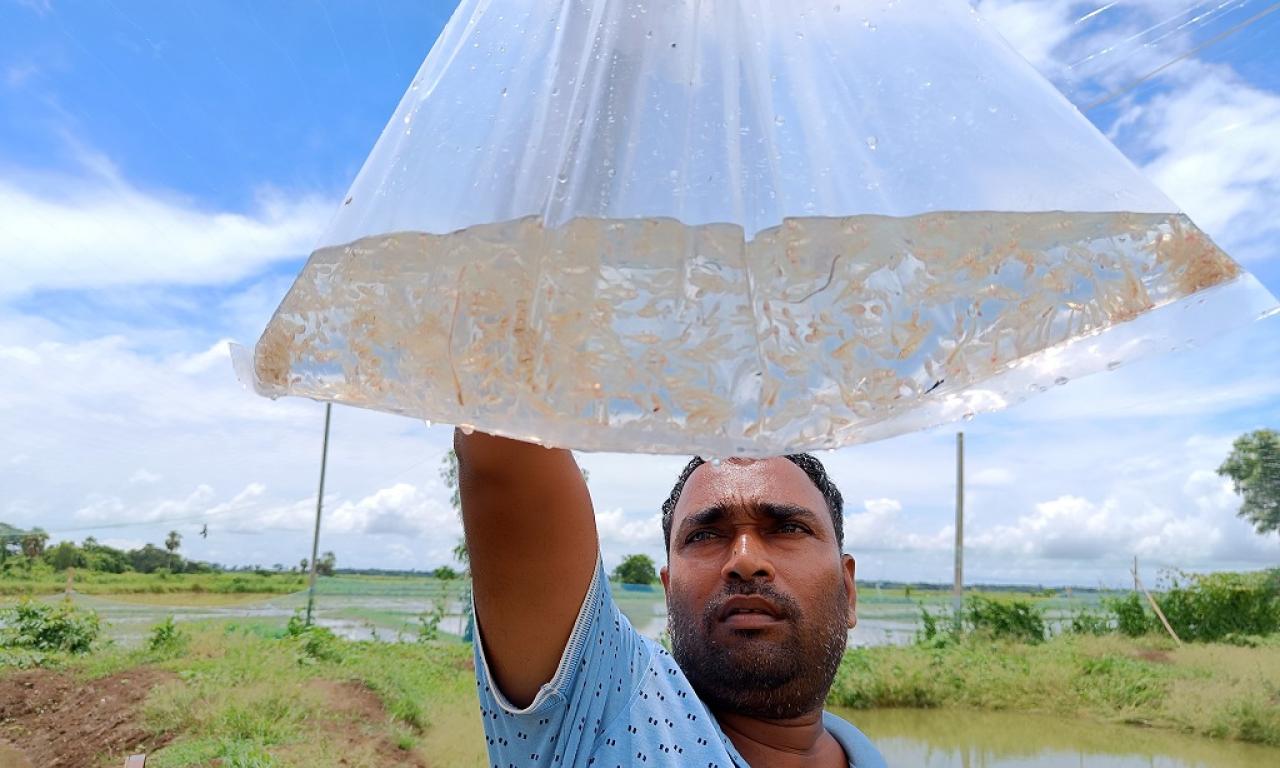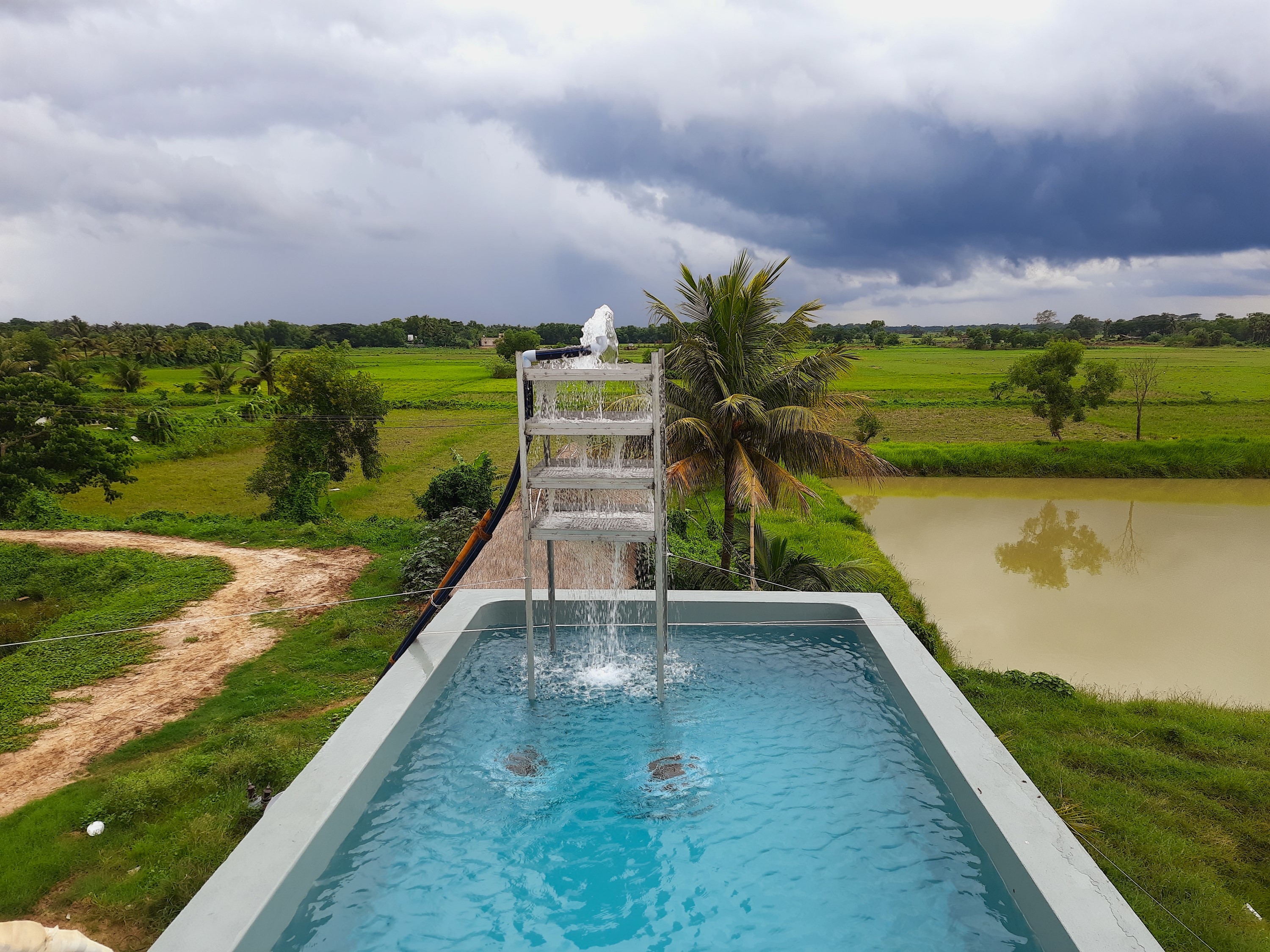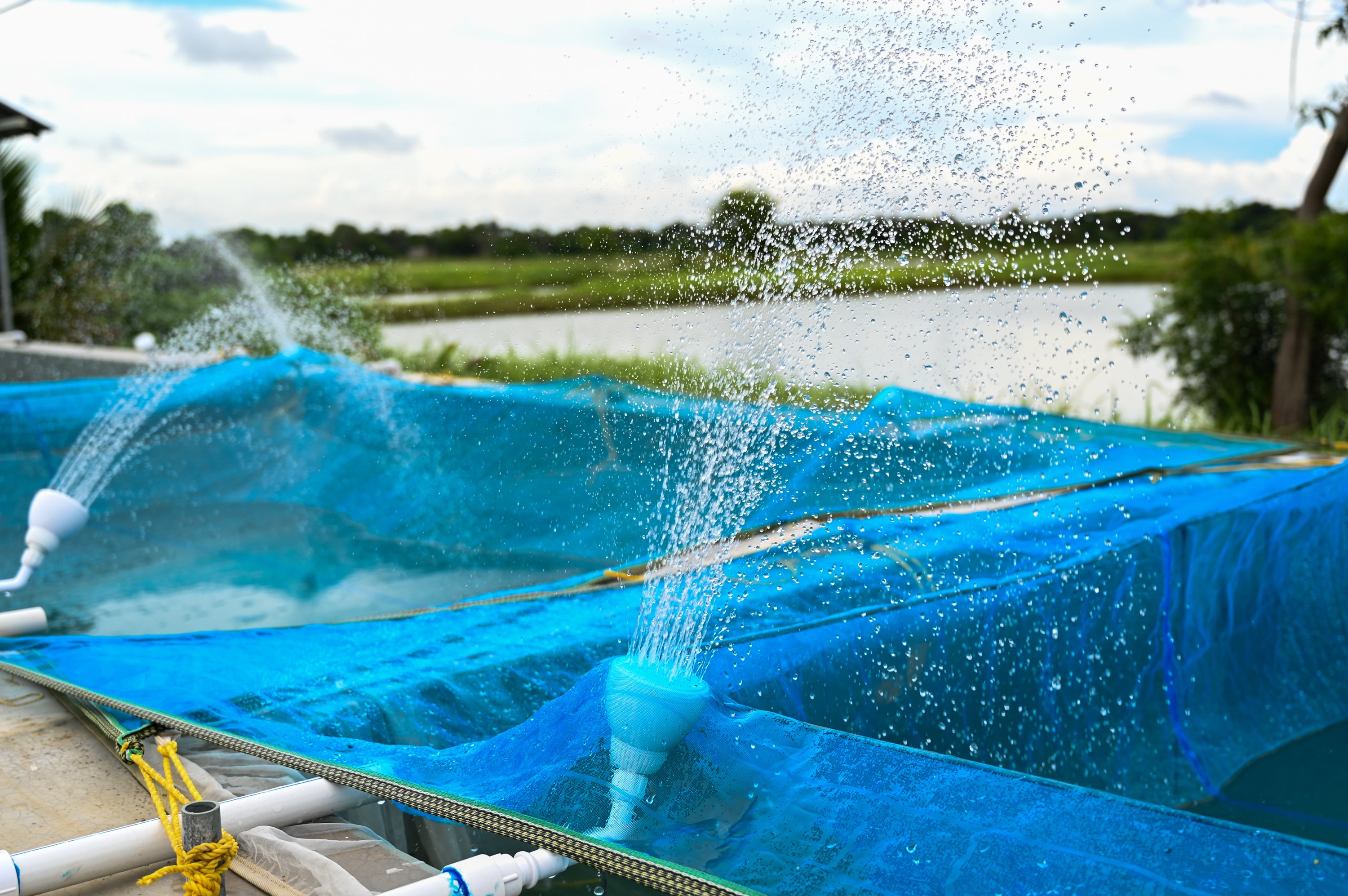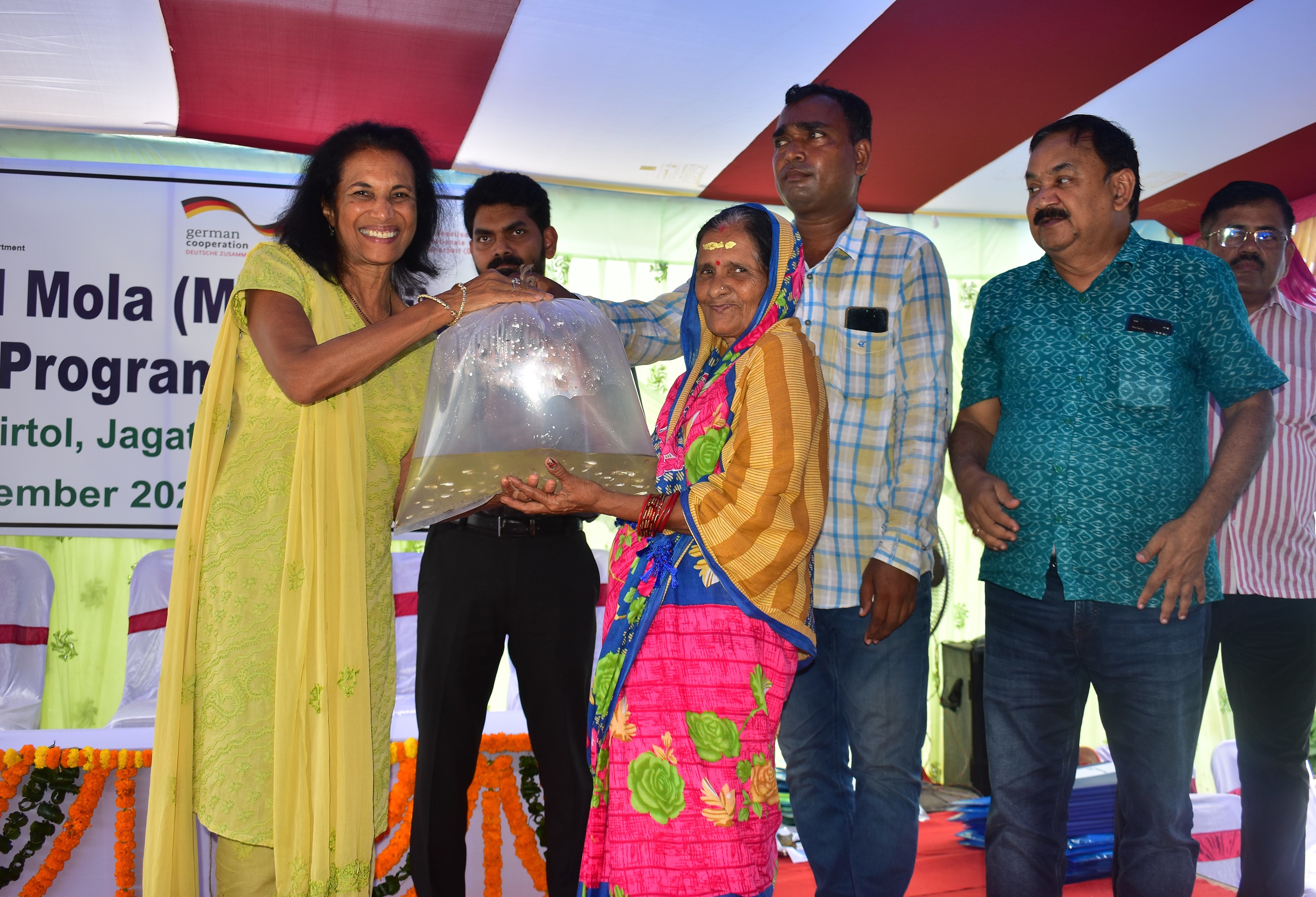
- A lack of standardized techniques for hatchery-based mass production of micronutrient-rich indigenous small fish species (SIS) is a key technical barrier to scaling up nutrition-sensitive aquaculture approaches.
- Loaded with vital micronutrients, mola (Amblypharyngodon mola) is a key species for nutrition-sensitive aquaculture in South Asia and can play a significant role in food-based strategies to address malnutrition.
- Through Deutsche Gesellschaft für Internationale Zusammenarbeit (GIZ) supported research, WorldFish has developed simple, easily replicable techniques for hatchery mass production of mola seed in India – a major technical breakthrough to accelerate the progress of nutrition-sensitive aquaculture on the sub-continent .
Undernutrition is one of India's most serious development challenges. The recent National Family Health Survey reveals alarming levels of childhood malnutrition, with 36 percent of Indian children stunted and 32 percent underweight. Aquatic foods such as fish are an excellent source of protein, minerals, vitamins and essential fatty acids that can play a vital role in the fight against malnutrition.
Some indigenous small fish species, referred to collectively as SIS, are many times richer in essential micronutrients than commonly farmed fish such as carp and can be considered natural superfoods. WorldFish has pioneered nutrition-sensitive aquaculture by promoting the addition of SIS to conventional carp farming systems.
Small fish, big benefits

Mola (Amblypharyngodon mola) is a champion species for nutrition-sensitive aquaculture, being particularly rich in vitamin A, which can protect against eye and skine diseases associated with vitamin A deficiency. Mola is also a good source of minerals like iron, zinc and calcium, essential fatty acids and amino acids that may help prevent micronutrient deficiencies in children and pregnant women. Therefore, mola has the potential to play a significant role in food-based strategies to address malnutrition within environmental boundaries.
Over the past decade, WorldFish has promoted nutrition-sensitive carp-mola farming in Odisha, Assam and Bangladesh to popularize SIS production for household consumption and income generation. WorldFish’s past research showed that including SIS in carp polyculture increases intakes of micronutrient-rich small fish by women and children and is a cost-effective way to reduce malnutrition.
Overcoming barriers to reach a larger population

However, unlike most modern aquaculture which uses juvenile fish, referred to as seed, produced in hatcheries, these efforts have relied on collecting SIS parent fish, known as broodstock, from natural sources to stock in farmers’ ponds, where they reproduce naturally. A lack of standardized hatchery mass production techniques for SIS has proven a key technical barrier to scaling up nutrition-sensitive aquaculture to reach much larger numbers of people.
To address this bottleneck, WorldFish is implementing a project in Odisha and Assam named Taking nutrition-sensitive carp-SIS polyculture technology to scale supported by Deutsche Gesellschaft für Internationale Zusammenarbeit (GIZ). A key goal of the project is to develop easily scalable standardized techniques for hatchery mass production of mola seed.
The breakthrough: Induced mola breeding for mass seed production

Most SIS are very delicate and too small to handle, making it challenging to produce seed in large quantities using standard hatchery techniques. Induced breeding, therefore, needs innovation and specially modified technology.
In June 2022, WorldFish successfully carried out induced breeding of mola for the first time in India at its partner hatchery, Biswal Aquatech, in Jagatsinghpur district, Odisha. From June to September 2022, the project’s fish breeding field team produced more than 7 million mola hatchlings in a series of carefully designed and monitored breeding experiments.
Breeding was performed in tanks specially constructed by the project, fed with a steady shower of oxygen-rich water from an aeration tower to improve breeding performance and larval survival. Mola hatchlings produced in this way are ready for sale within 3 to 4 days of hatching. The field team also developed guidelines for nursing mola seed to larger sizes before stocking or sale and the hatchery is currently selling mola hatchlings and fry to local farmers and Women’s Self-Help Groups (WSHGs).
Multiple advantages of stocking hatchery-produced SIS seed

Stocking hatchery-produced SIS seed offers several advantages over the previous practice of stocking broodfish harvested from natural water bodies. Stocking wild breeders in seasonal ponds where water is only available for a short period can be challenging because ponds may dry up before their progeny attain market size.
Moreover, ponds stocked with wild breeders contain SIS populations comprised of a mix of age groups, resulting in the production of fish of variable sizes that are less preferred in the market. Stocking wild fish also risks introducing pathogens into farmers’ ponds. Seed produced by spontaneous natural spawning in the pond also faces hardships such as competition for food, cannibalism and predation.
In contrast, hatchery-produced SIS seed are of uniform size and age and can be stocked at the optimum time and density to maximize survival and growth. Pathogen infections are less likely when stocking hatchery-produced SIS seed because of hatchery management practices like quarantining brooders, maintaining biosecurity and disinfecting fish.
Moreover, hatchery-produced seed can be conditioned and packed in clean well-oxygenated water before delivery to farmers, reducing mortalities during transport and stocking. Stocking hatchery-produced fry can also ensure a uniform size of SIS at harvest, making them more marketable and fetching better prices. Hatchery-based seed production also offers the possibility of stimulating spawning much earlier than in the wild, giving farmers a head-start over nature.
Distributing mola seed to fish farmers and WSHGs

To celebrate this breakthrough and share the project’s experiences, WorldFish organized a mola seed release program with Biswal Aquatech on 28th September 2022, in collaboration with the Government of Odisha’s Fisheries and Animal Resources Development Department (FARD).
Guests at the event included Shakuntala Thilsted, global lead for nutrition and public health at WorldFish, Yeddula Vijay, director of the Animal Resources Department at FARD, Debananda Bhanja, additional director of fisheries and other senior Department of Fisheries officials. More than 100 fish farmers and WSHG members attended and many received oxygen-packed bags of mola seed.
Mola seed production appears to have a promising future in Odisha based on the resounding endorsement and active participation by WSHG members, local farmers and government representatives. Speaking at the event, Thilsted stated that she and Francois Rajts – the project’s fish breeding consultant – first discussed the necessity of SIS seed production while working together in Bangladesh during the early 1980s and that dream has now been realized.
“We must look beyond the simple economic gains and strategize aquatic food systems to improve food and nutrition security and livelihoods for all,” added Thilsted, who is also the 2021 World Food Prize laureate.
Acknowledgment
This project is funded by the German Federal Ministry for Economic Cooperation and Development (BMZ) and commissioned by the Deutsche Gesellschaft für Internationale Zusammenarbeit (GIZ) through the Fund International Agricultural Research (FIA).
Funded by



